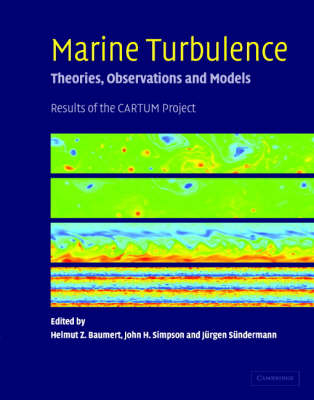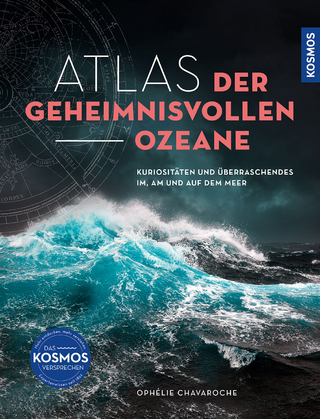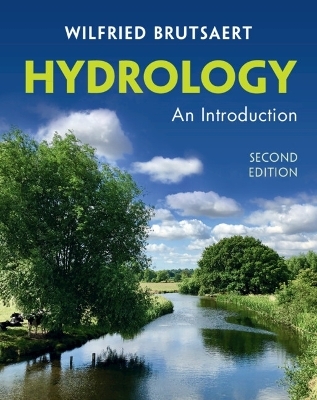
Marine Turbulence
Cambridge University Press (Verlag)
978-0-521-83789-7 (ISBN)
- Titel erscheint in neuer Auflage
- Artikel merken
This 2005 book gives a comprehensive overview of measurement techniques and theories for marine turbulence and mixing processes. It describes the processes which control the mixing of greenhouse gases, nutrients, trace elements, and hazardous substances in our oceans and shelf seas - from local to planetary scales. These processes buffer climate changes and are centrally important for regional to global ecosystem dynamics. The publication also contains source codes of turbulence models and models of the upper-ocean mixing layer (COHERENS and GOTM), and observational data sets of turbulence characteristics or corresponding proxies of waters from all over the world. These can be found at www.cambridge.org/9780521153720. Written by a team of 53 world-leading experts, it represents a rich source of data and methods for students and scientists in oceanography, hydrology, limnology, and meteorology, as well as marine, naval and civil engineers.
Helmut Baumert (Dipl.-Phys., PhD and DSc at the Technical University of Dresden) started his work on turbulence as a Research Fellow in Siberia, with special emphasis on hydrophysico-ecological coupling in natural waters. He is author/co-author of 85 publications. As a Professor of Physical Oceanography and Theoretical Physics he taught at University of Oldenburg, Germany. He supervised more than 15 PhD theses; acts as a reviewer for journals such as Nature, Journal of Physical Oceanography and Journal of Geophysical Research, and for scientific bodies like NSF (USA), NERC (UK) and CFCAS (Canada). John Simpson (BA, Oxon, PhD and DSc in Liverpool) has made significant contributions to the study of buoyancy, tidal stirring and mixing fronts as well as to turbulent energy dissipation and vertical mixing in shelf seas and estuaries. He is author or co-author of 120 scientific papers, has served as a member of the UK Natural Environment Council, as Chairman of the NERC North Sea Community Project and the Shelf Edge component of the LOIS Programme, as Head of the School of Ocean Sciences at the University of Wales, Bangor, and as President of the Challenger Society for Marine Science. He has undertaken reviews of marine science in Canada, Sweden and Denmark and serves as a member of the editorial boards of four international journals. Jurgen Sundermann (Dipl.- Math., PhD and DSc) was Assistant Professor at University of Hannover and later Full Professor at University of Hamburg where he directed the Institute of Oceanography and later the Center of Marine and Climate Research. He is a member of the Polish Academy of Sciences, and editor of the books Oceanography, Landoldt-Bornstein Series, and Circulation and Contaminant Fluxes in the North Sea.
List of contributors; Foreword; Preface; Joel H. Ferviger - Obituary; Part I. On the Physics of Turbulence; 1. Prologue; 2. Turbulence: its origins and structure; 3. A novel two-equation turbulence closure for high Reynolds numbers: homogenous stratified shear layers; 4. A novel two-equation turbulence closure for high Reynolds numbers: spatially non-uniform turbulence; 5. on some analogies between high-Reynolds-number turbulence and a vortex gas for a simple flow configuration; 6. A spectral-closure model for turbulent flows with stable stratification; 7. Intermittency; 8. Horizontal mixing processes; 9. Epilogue; Part II. Observational Methods; 10. Prologue; 11. Horizontal and vertical turbulence profilers; 12. Microstructure sensors; 13. Optical sensors; 14. Dissipation measurement: theory; 15. Acoustic Doppler techniques; 16. Validation of microstructure-based diffusivity estimates using tracers in lakes and oceans; 17. Other methods and approaches; 18. Epilogue; Part III. Numerical and Computational Methods; 19. Prologue; 20. Direct and large-eddy simulation of turbulence; 21. Marine-turbulence modeling using data assimilation; 22. A generic transport equation for the length scale in turbulent flows; 23. Some numerical aspects of turbulence-closure models; 24. How to do random walk right in eddy-viscosity models; 25. The GOTM modeling system; 26. Coupling of the GOTM turbulence module to some three-dimensional ocean models; 27. Epilogue; Part IV. Boundary Layers; 28. Prologue; 29. The surface mixed layer: an overview; 30. The near-surface boundary layer; 31. Modeling turbulence generation by breaking waves; 32. Langmuir circulation; 33. Near-bottom boundary layers; 34. Equatorial turbulence; 35. The effect of rotation on convective boundary-layer turbulence; 36. Epilogue; Part V. Estuaries, Fjords, and Lakes: 37. Prologue; 38. Turbulence in a swift tidal channel with weak stratification; 39. Partially mixed estuaries: the Hudson River; 40. Turbulence measurements in highly stratified estuaries; 41. Turbulence measurements in fjords; 42. Turbulence and mixing regimes specific to lakes; 43. Epilogue; Part VI. Shelf Seas and the Shelf Edge: 44. Prologue; 45. The near-shore region; 46. The four shelf-sea regimes; 47. The doubly stratified regime: turbulence closures for an OGCM of the Baltic Sea; 48. The shelf edge: internal waves; 49. Epilogue; Part VII. Large-Scale Processes; 50. Prologue; 51. Routes to dissipation in the ocean: the two-dimensional/three-dimensional turbulence conundrum; 52. From mixing to geostrophy: geostrophic turbulence in atmospheres, oceans, and the laboratory; 53. Geostrophic eddies: an overview of their effects and parameterizations in ocean models; 54. Vortex dynamics and turbulent lateral heat transport; 55. Subgrid- and supergird-scale parameterization of turbulence in quasi-two-dimensional barotropic flows and phenomenon of negative viscosity; Energy spectra and zonal flows on the β-plane, on a rotating sphere, and on giant planets; 57. Vortex dynamics and β-plane turbulence; 58. On the role of eddy mixing in the transport of zonal ocean currents; 59. Passive scalars in two-dimensional and quasi-geostrophic turbulence; 60. Epilogue; Part VIII. The CD-ROM: Data Sets and Numerical Codes: 61. Prologue; 62. Model codes; 63. Data sets; 64. Epilogue; References.
| Verlagsort | Cambridge |
|---|---|
| Sprache | englisch |
| Maße | 223 x 283 mm |
| Gewicht | 2030 g |
| Themenwelt | Naturwissenschaften ► Geowissenschaften ► Hydrologie / Ozeanografie |
| ISBN-10 | 0-521-83789-8 / 0521837898 |
| ISBN-13 | 978-0-521-83789-7 / 9780521837897 |
| Zustand | Neuware |
| Haben Sie eine Frage zum Produkt? |
aus dem Bereich


